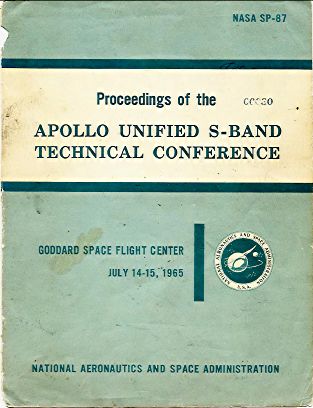Space travel before the moon landing was limited to the Earth’s orbit so the exchange of information between space craft and NASA had been served adequately through the use of UHF and VHF systems for two-way voice communication, telemetry and biomedical information of the crew. The goal of extending travel to the moon, and broadcasting images back to Earth, presented a new level of technical challenges never met before.
The first solution was to add an erectable antenna to Apollo 11’s Landing Module, “Eagle”, so that communication could be established quickly, and the landing party would not have to wait until an Earth-bound tracking station came within range.
The second solution was changing from the UHF and VHF frequencies to a Unified S-band frequency, seeking to gain up to 700kHz bandwidth to accommodate a visual image relay, as well as the usual exchange of data between space craft and NASA.
The strength of the USB frequency lies in its ability to transmit over the long distance between the Moon and the Earth and to penetrate the Earth’s atmosphere without disruption.
NASA approached Westinghouse Electric’s Aerospace Division to develop a low light, slow-scan camera which used a format of 320 scan lines taken at 10 frames per second to fit into the 700 kHz bandwith (as opposed to the standard camera of the day which used 525 scan lines taken at 30 frames per second) which could also handle the high contrast of reflected light on the moon’s surface up against the dark background of the universe; the extreme cold of the moon’s atmosphere, and the potentially damaging landing onto the moon’s surface.
The televised broadcast began from the Westinghouse camera set upon the moon surface sending data to the antenna on the Land Module, which sent data via the USB frequency back to tracking stations in Goldstone in California, Honeysuckle Creek near Canberra in the ACT, and Parkes Radio Astronomy Site in New South Wales.
From there, the low-scan images were converted back up to 525 lines, 30 frames per second, then by microwaves, sent from the tracking stations to satellites heading back to Mission Control in Houston, who then broadcast it to the world.
